Navigating Workplace Friction: How to Work with Difficult Co-workers
It's inevitable that you'll encounter someone you don't get along with at some point during your career. Whether due to differing perspectives, work styles, or personalities, friction between co-workers can happen. But conflict doesn't have to derail your productivity or workplace satisfaction. In fact, learning to work with challenging colleagues is a skill that can help you grow both personally and professionally. By taking a proactive approach and implementing a few key strategies, you can transform difficult interactions into opportunities for positive outcomes.
Start with Self-Reflection
Before addressing the issue head-on, begin by looking inward. Often, tension with a co-worker stems from unresolved feelings or misunderstandings. Ask yourself: "What exactly is bothering me about this person?”
Taking time to pinpoint the specific actions, traits, or behaviors that irritate you helps clarify your thoughts and provides a clearer path to resolution.
Assess Your Emotions and Perspectives
Once you've identified what bothers you, assess your emotions around the situation. Are the co-worker’s actions genuinely disruptive to the workplace, or are they simply a minor annoyance? Do they clash with your work style, or are they behaving in a way that's problematic for the entire team?
Being honest with yourself about the severity of the issue helps you approach it with a level head. A thorough self-assessment allows you to distinguish between personal preferences and legitimate workplace concerns.
Consider Your Role in the Conflict
Sometimes, the source of friction might be closer to home than you'd like to admit. Ask yourself whether your own behavior or communication style may have contributed to the tension. Are you misinterpreting their actions, or have your reactions escalated the conflict? By considering how your actions or perceptions might play a role, you can approach the situation with greater empathy and perspective. Acknowledging any role you play in the conflict sets the foundation for more constructive dialogue.
Strategy A: Limit Exposure and Set Boundaries
Not every workplace conflict requires an in-depth conversation or formal resolution. If the issues are minor, one of the easiest strategies is to limit your interactions with the difficult co-worker. By minimizing the time you spend with them and avoiding non-essential discussions, you can reduce the chances of tension building.
Emotional Detachment for Mental Health
Practicing professional emotional detachment is a great way to safeguard your mental health in a challenging environment. Picture your co-worker as a client rather than a colleague—someone you must interact with professionally but not personally. This mental shift can help you handle interactions with less emotional charge, making it easier to stay calm, collected, and professional.
Wherever possible, avoid engaging in topics that could lead to friction. Stick to essential work conversations and keep interactions brief but respectful. Reducing the emotional weight of your interactions allows you to manage your time and mental energy more effectively.
Strategy B: Build Rapport (If You Can)
Sometimes, what starts as a difficult relationship can evolve into a more amicable one with time and effort. Approaching a difficult co-worker with curiosity and empathy might uncover common ground, shared interests, or a mutual respect that wasn't evident before.
Approach with Empathy and Curiosity
Empathy can be a powerful tool in diffusing workplace tension. By trying to understand why your co-worker acts the way they do, you may develop a deeper sense of patience and tolerance. Perhaps they’re under pressure from management, or they work in a style that’s different but no less valid than yours. Asking yourself what might be motivating their behavior helps shift your mindset from one of frustration to one of understanding.
Try striking up conversations on neutral, non-work-related topics to learn more about their interests. Finding shared experiences or discovering common ground can lead to a gradual improvement in the dynamic, potentially turning a challenging relationship into one that’s more positive—or at least more bearable.
Strategy C: Maintain Professionalism
If personal rapport doesn’t develop, the next best option is to focus on professionalism. When a workplace conflict is unavoidable, setting the standard for respectful, effective communication is key.
Conflict Resolution for Professional Relationships
Maintaining respect and professionalism should always be the goal in workplace interactions. If the tension escalates and a resolution seems elusive, it may be necessary to involve a third party, such as a supervisor or mediator, to help facilitate a solution. Approach these discussions with a focus on finding a middle ground, rather than winning an argument. The goal should be to keep conflict from affecting your work while ensuring that both parties feel heard and respected.
No matter how difficult the situation is, remaining calm and collected is the best way to keep conflict from spiraling. Taking the high road can sometimes feel challenging, but it will ultimately contribute to a more harmonious work environment.
Finding Common Ground in a Diverse Workplace
The modern workplace is filled with a wide range of personalities, values, and work styles. As frustrating as it may be at times, this diversity also brings valuable perspectives to the table. By working on your own self-awareness, using strategic approaches to manage friction, and maintaining professionalism, you can turn potentially negative situations into opportunities for growth.
Dealing with difficult co-workers isn’t always easy, but it’s an important skill in any professional setting. By applying the strategies outlined above, you can improve your work environment and keep your relationships with colleagues productive and respectful.
What's Next?
The next time you face a challenging colleague, remember that you have options. From self-reflection to setting boundaries, empathy to professionalism, there's always a way to navigate workplace friction and move forward.
There are several great articles written on the topic as well. We encourage you to read these if you need to explore different approaches to making your difficult relationships work:
Photo by Siavash Ghanbari on Unsplash

